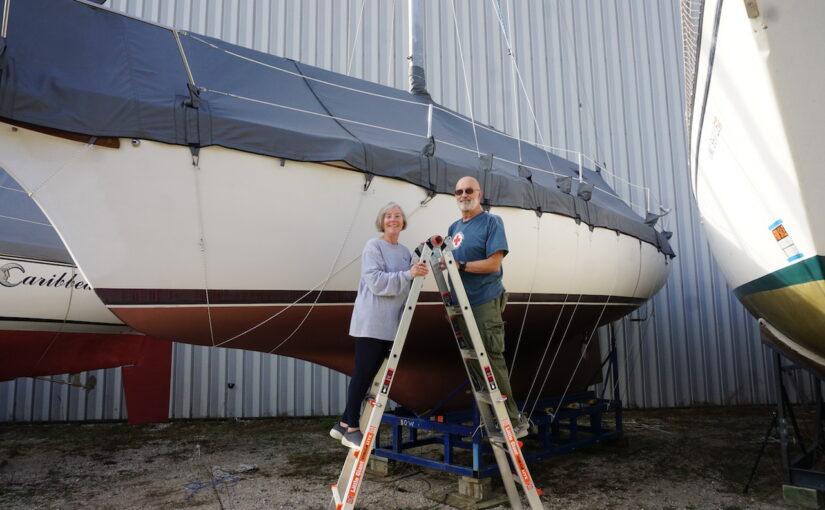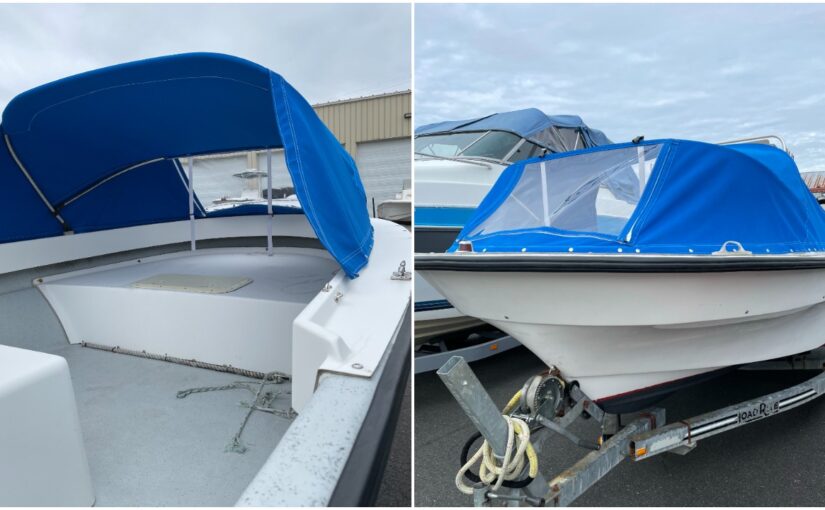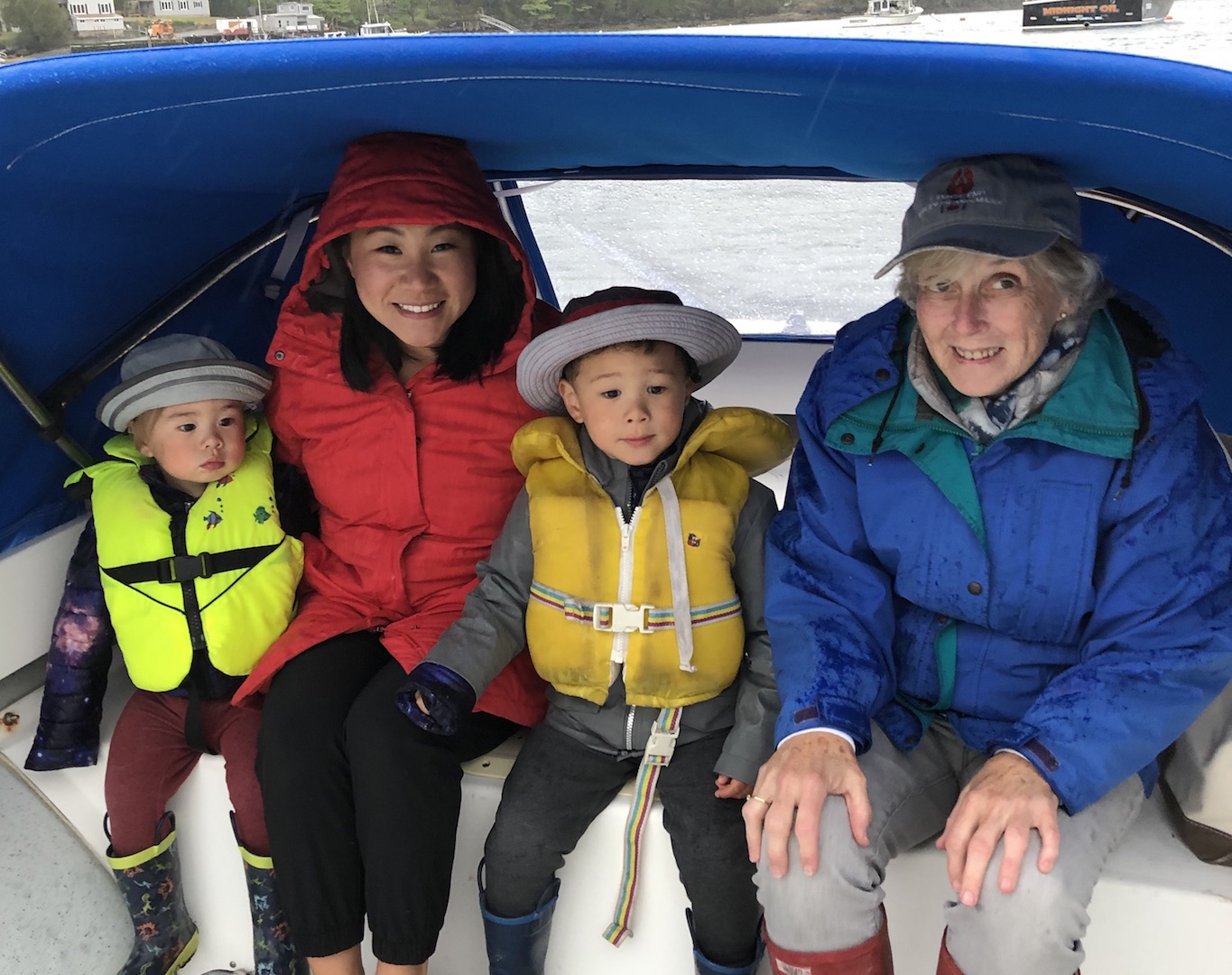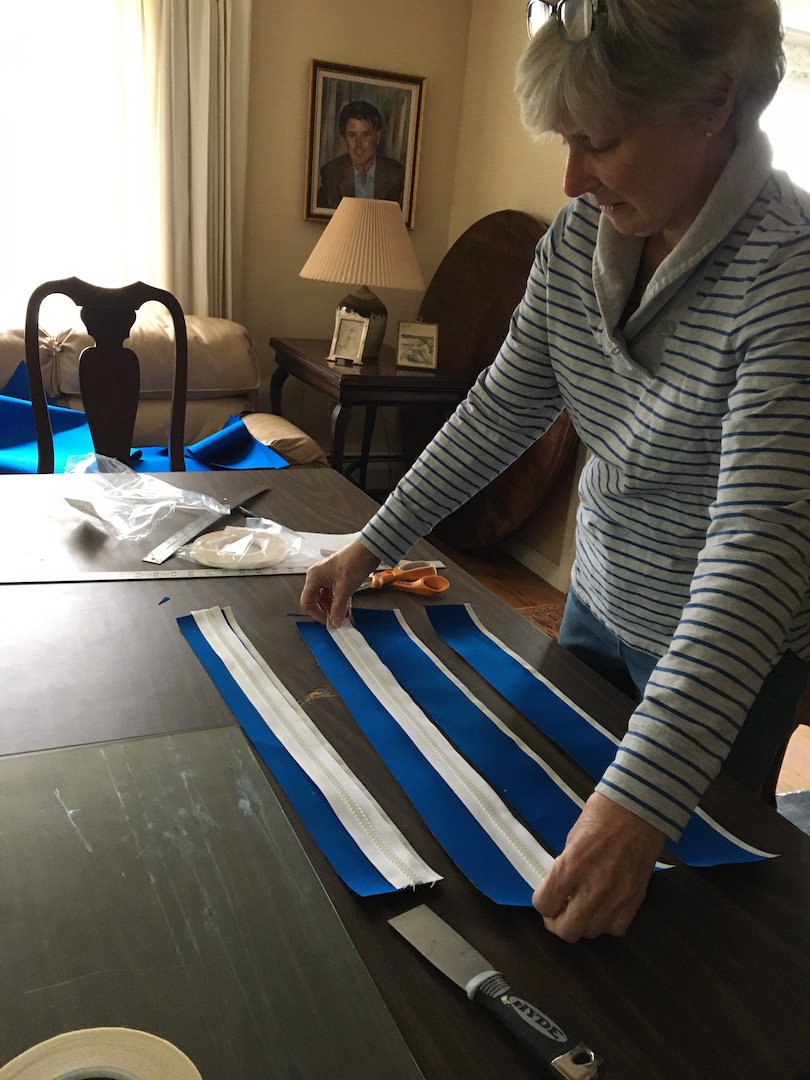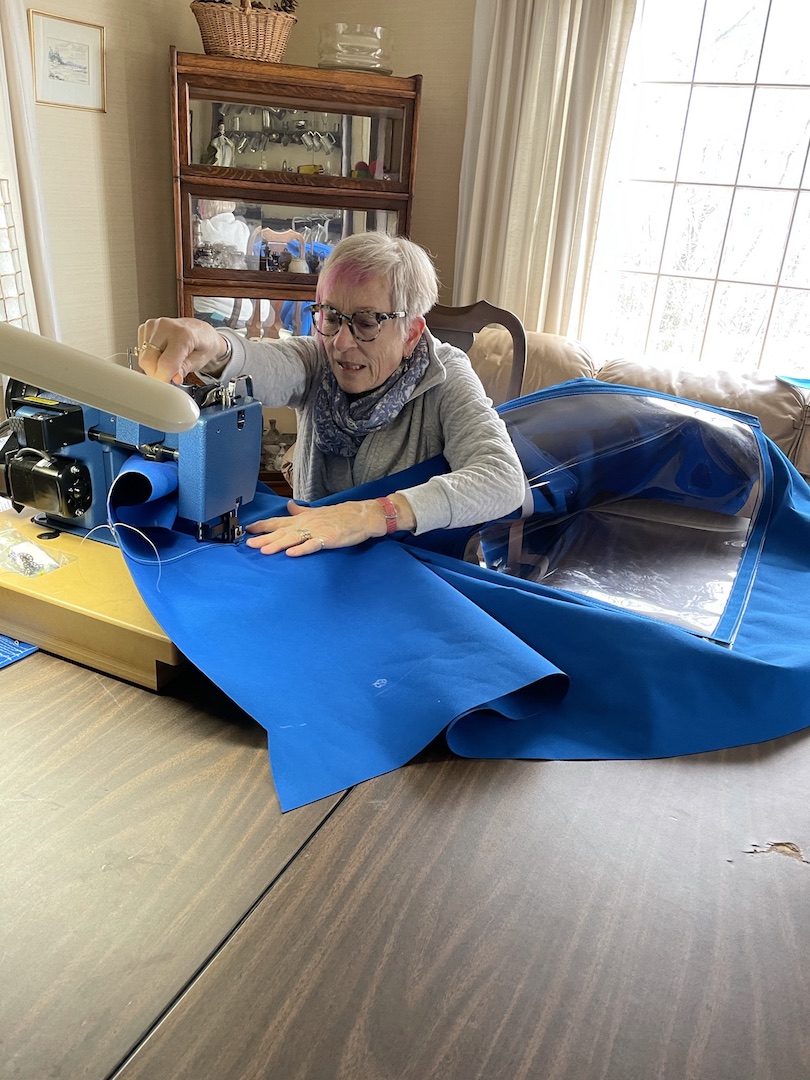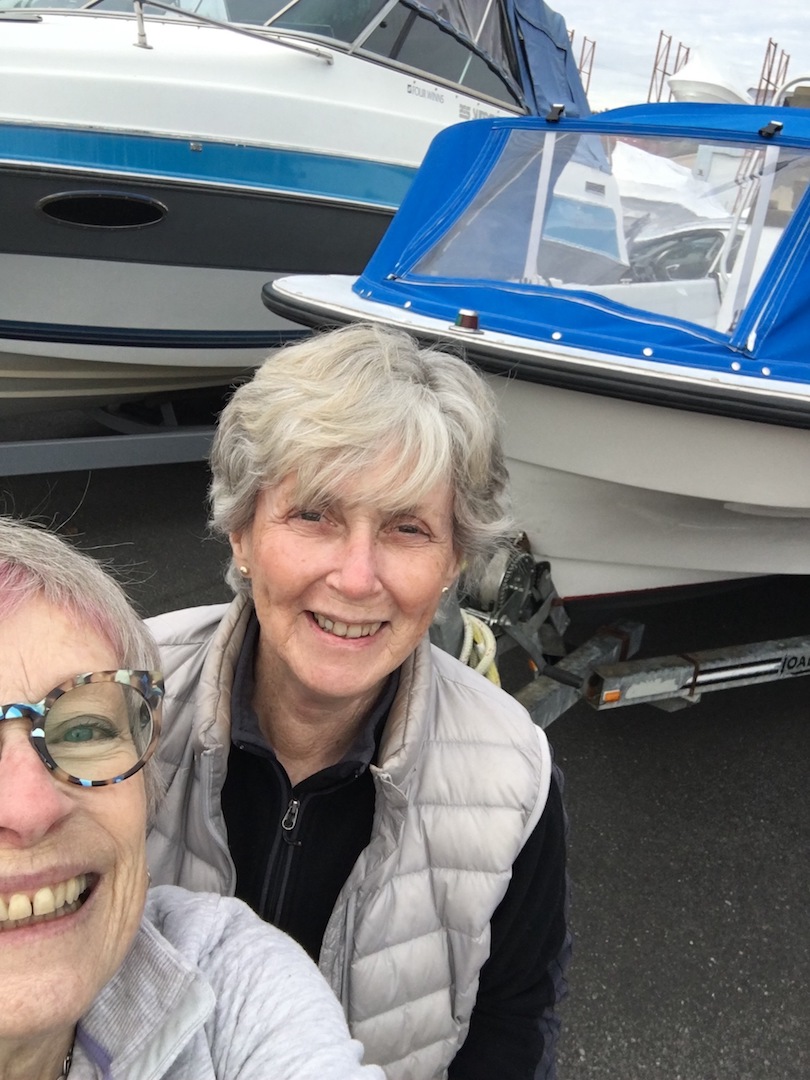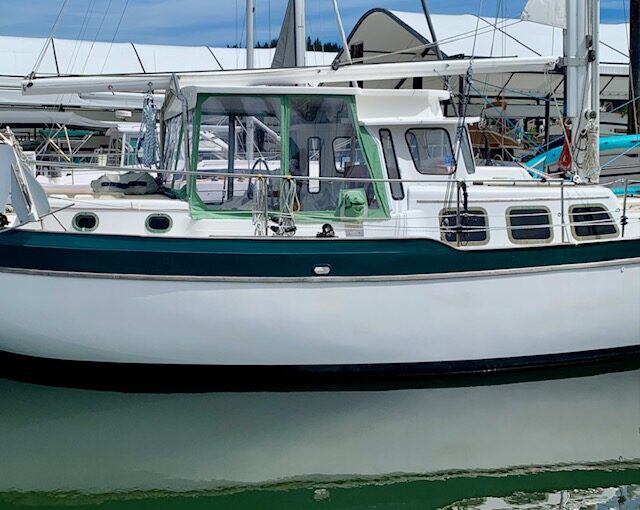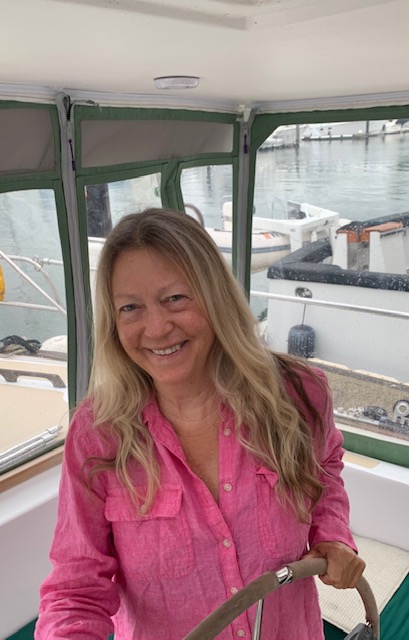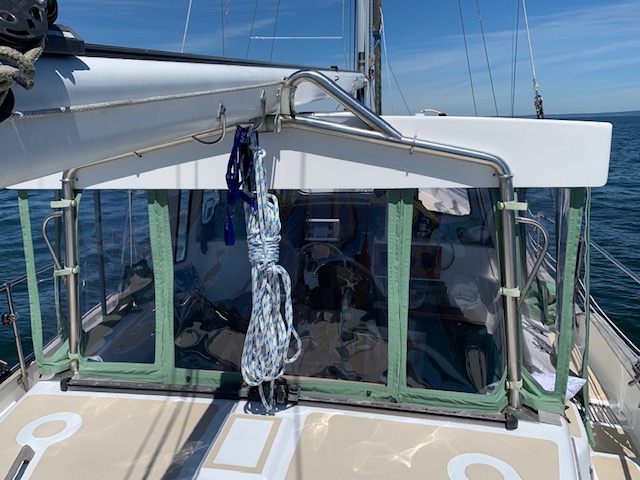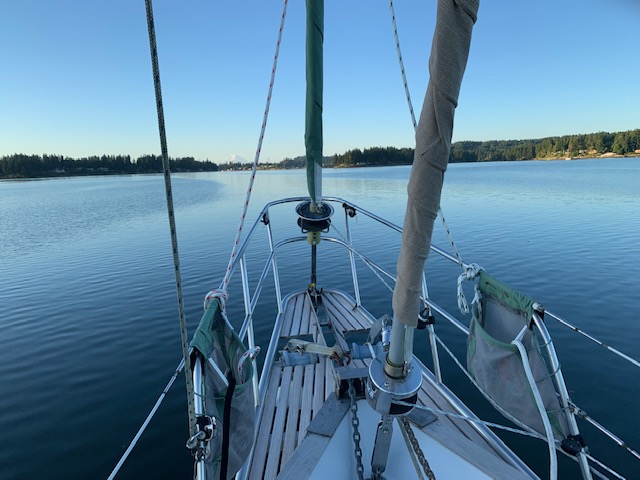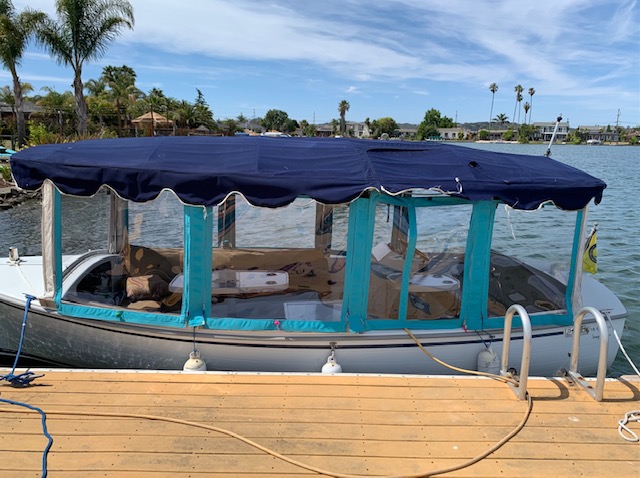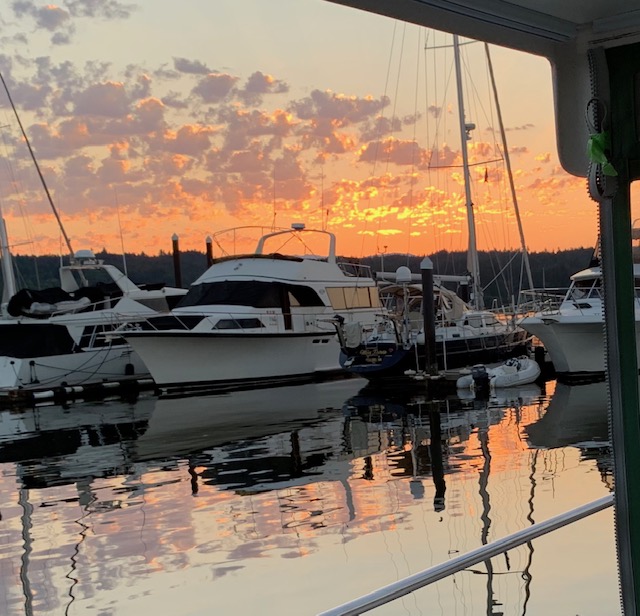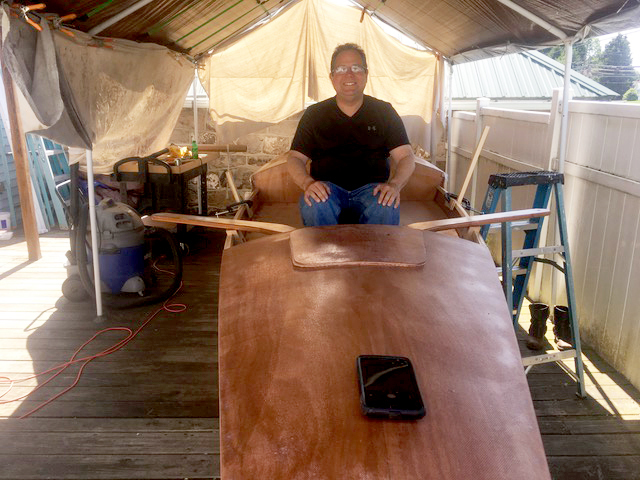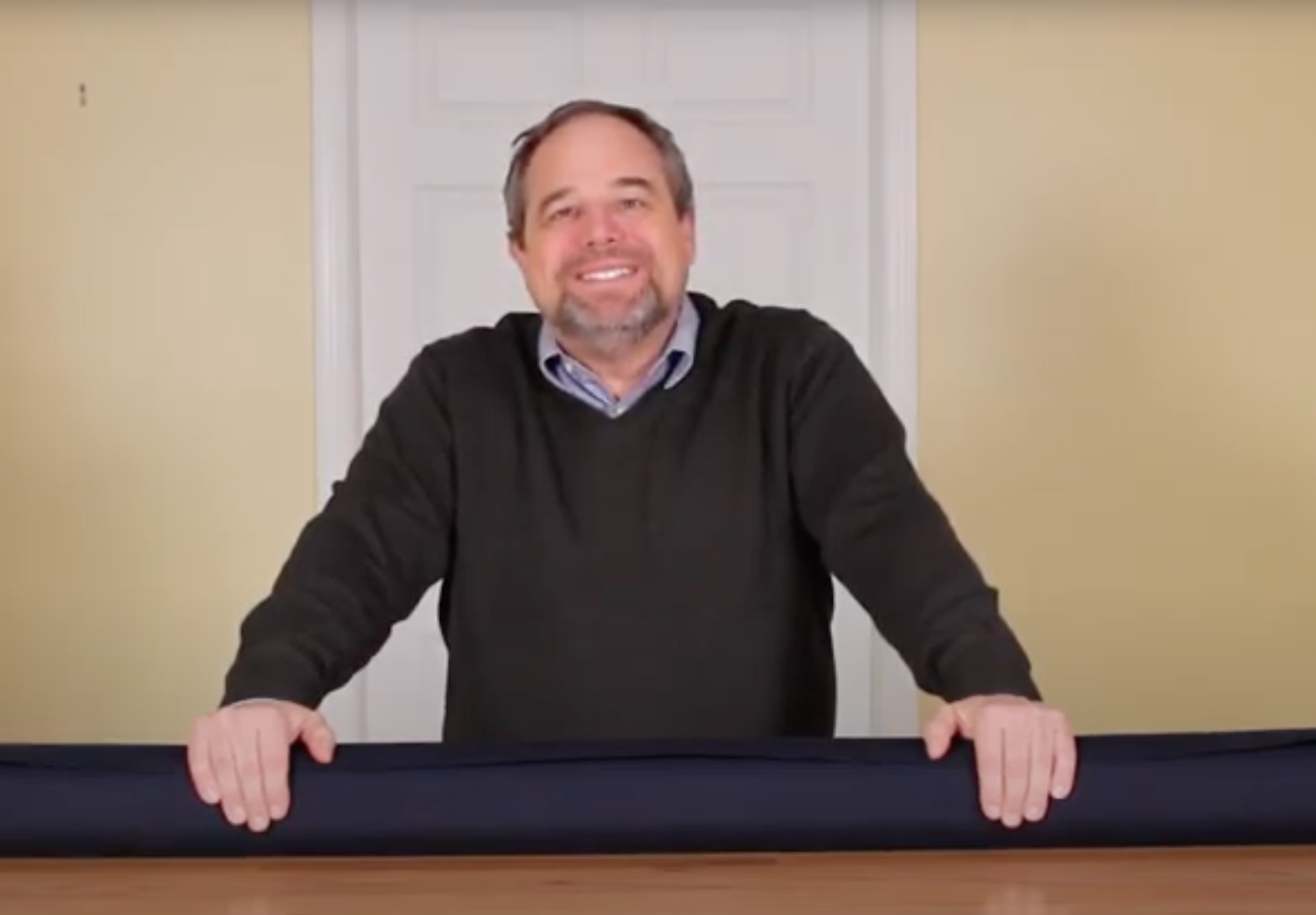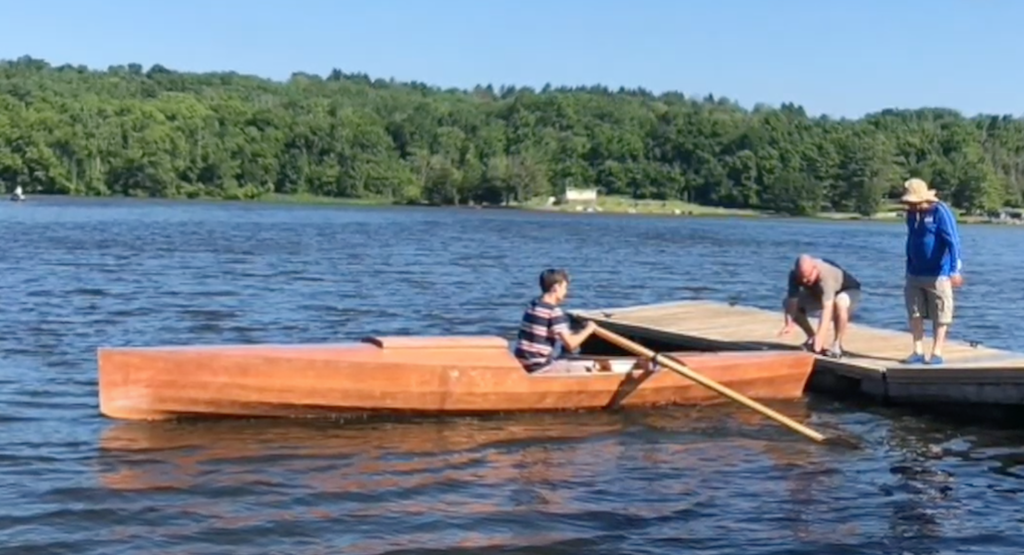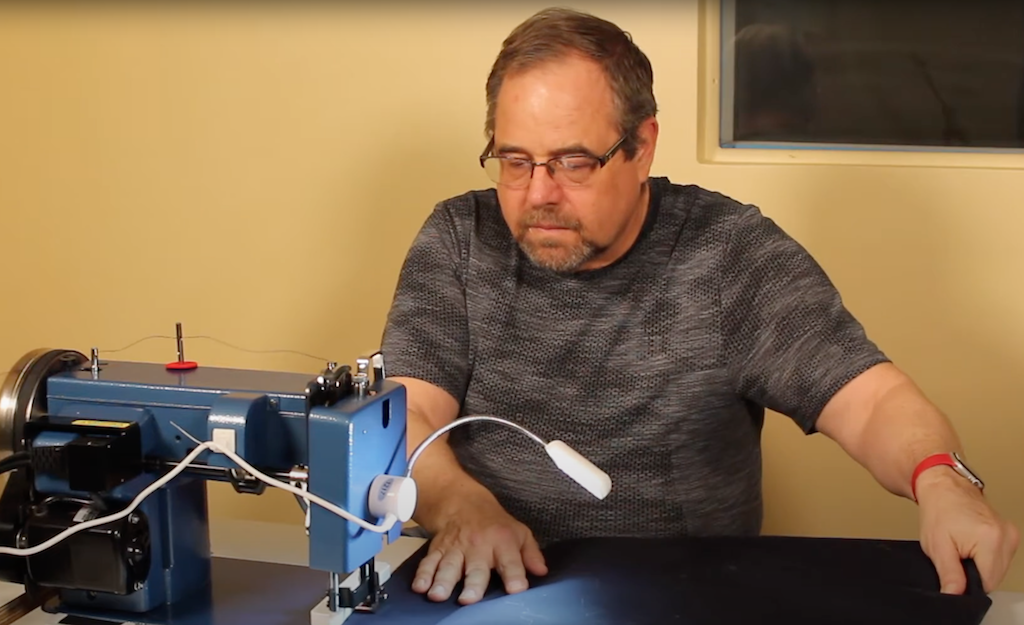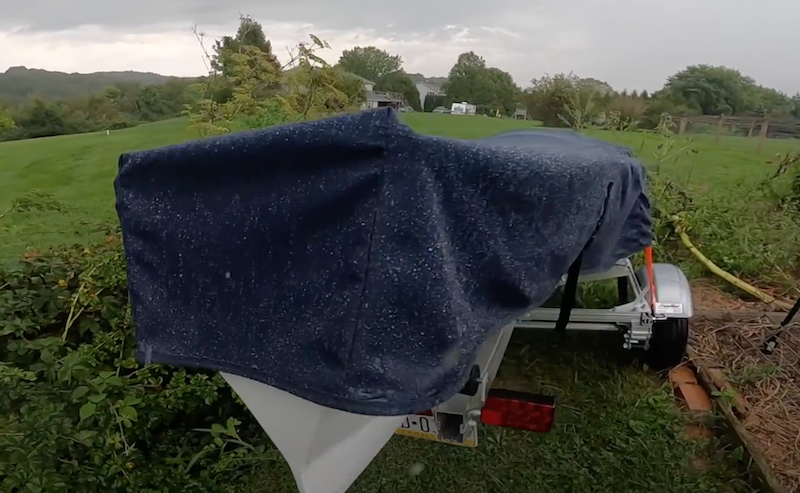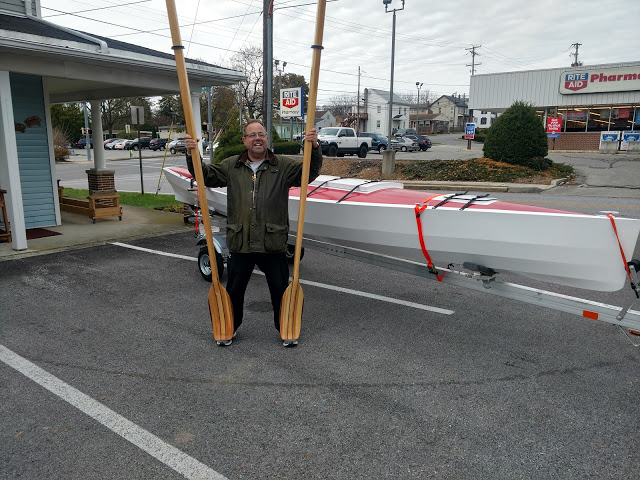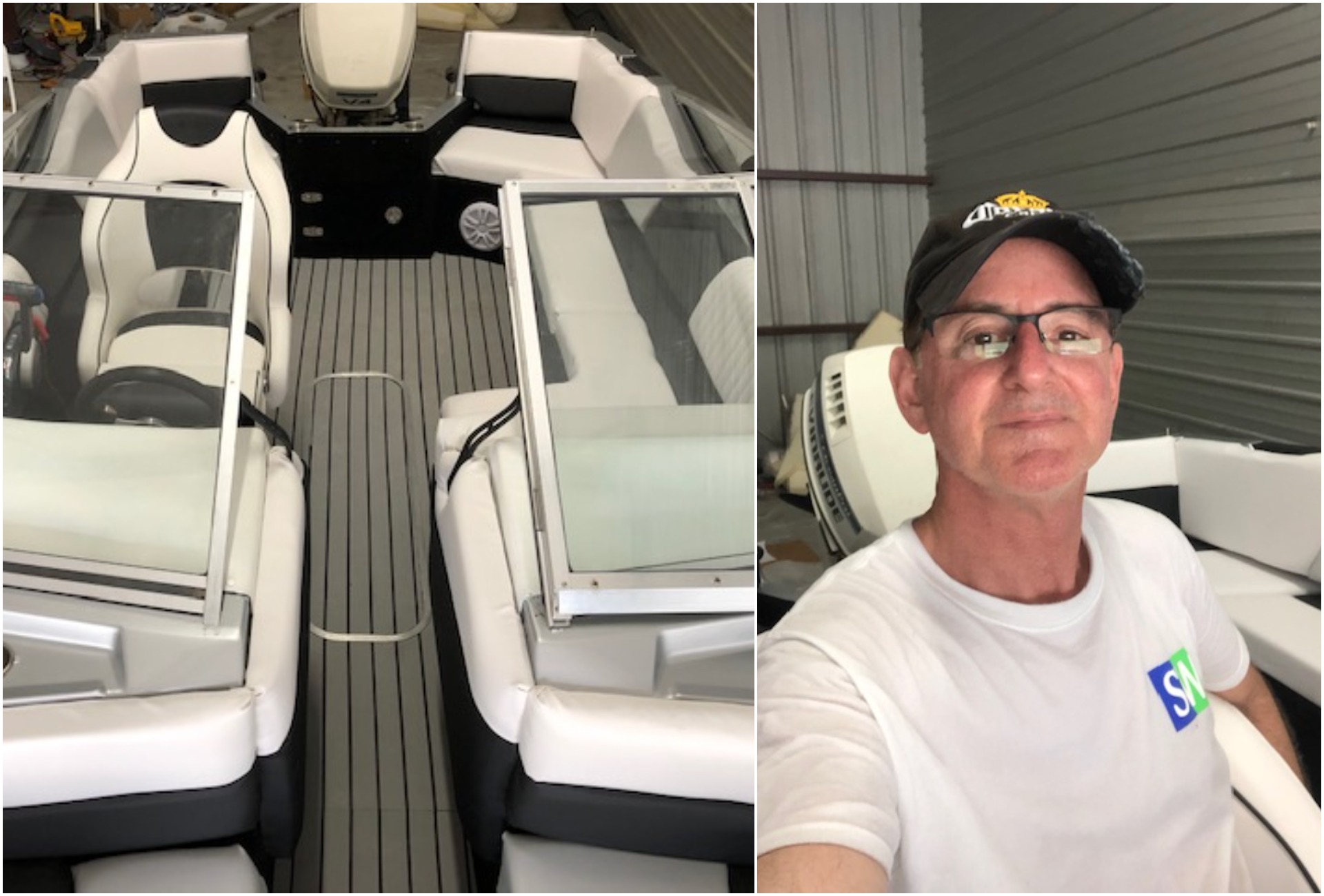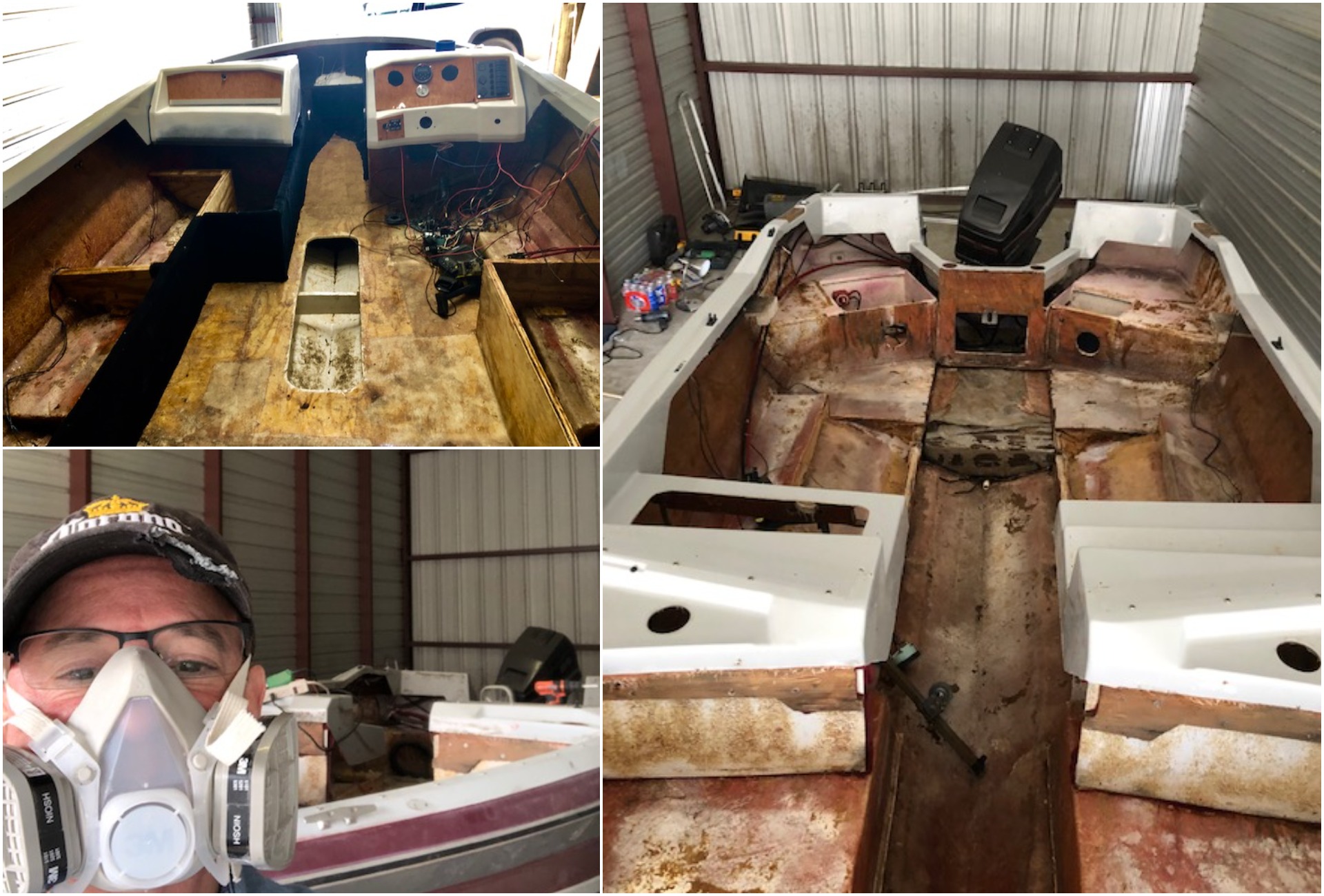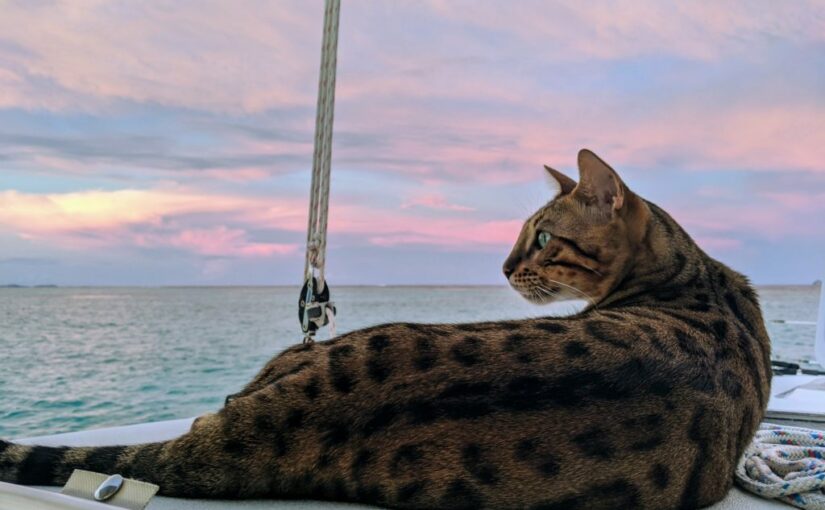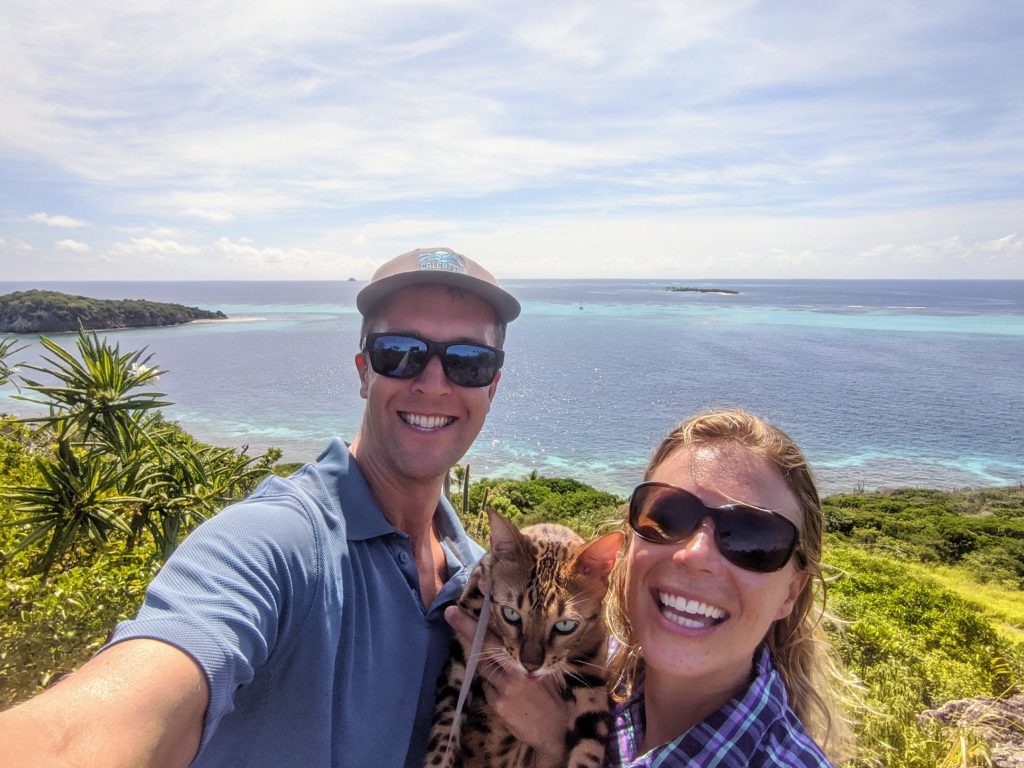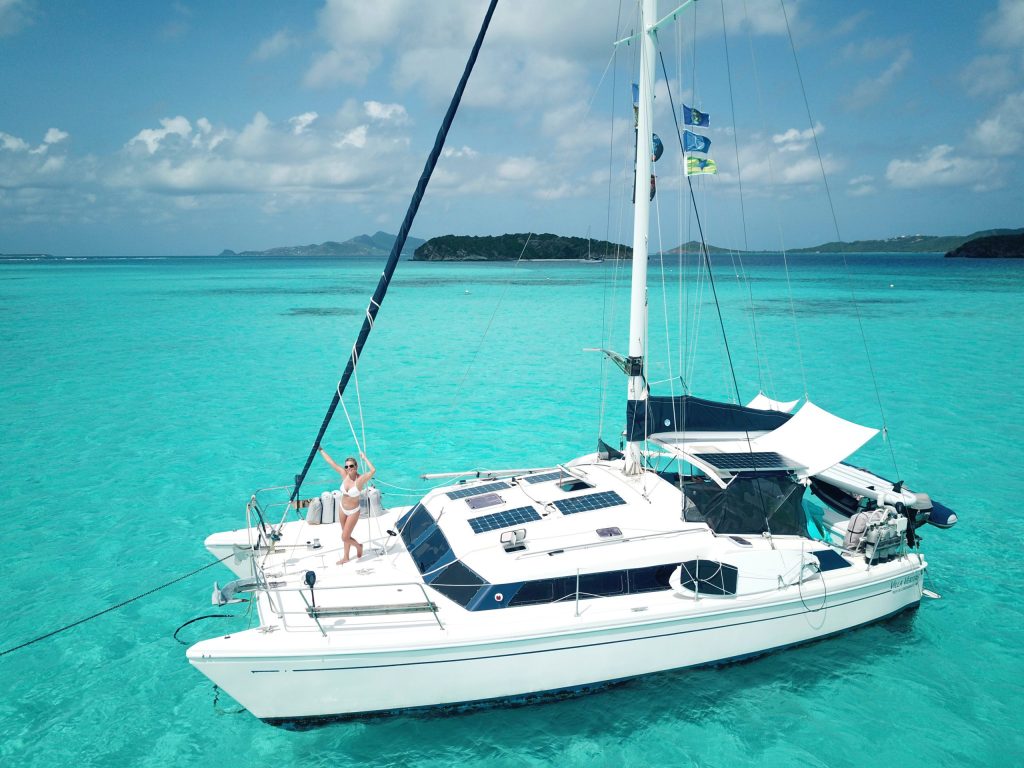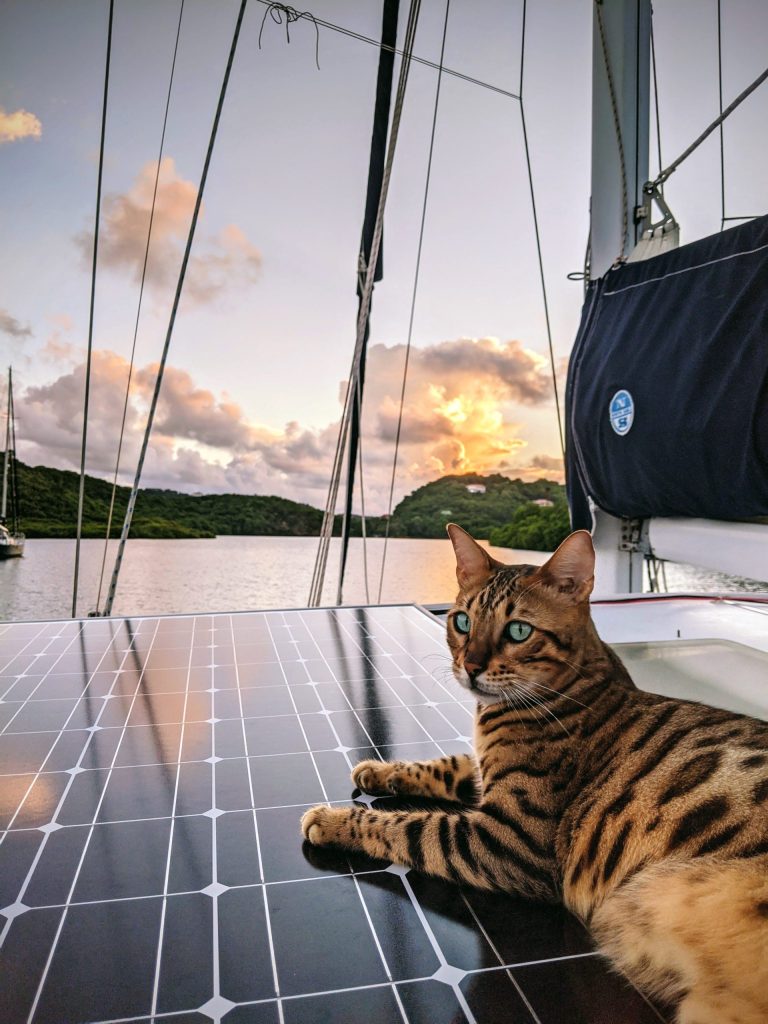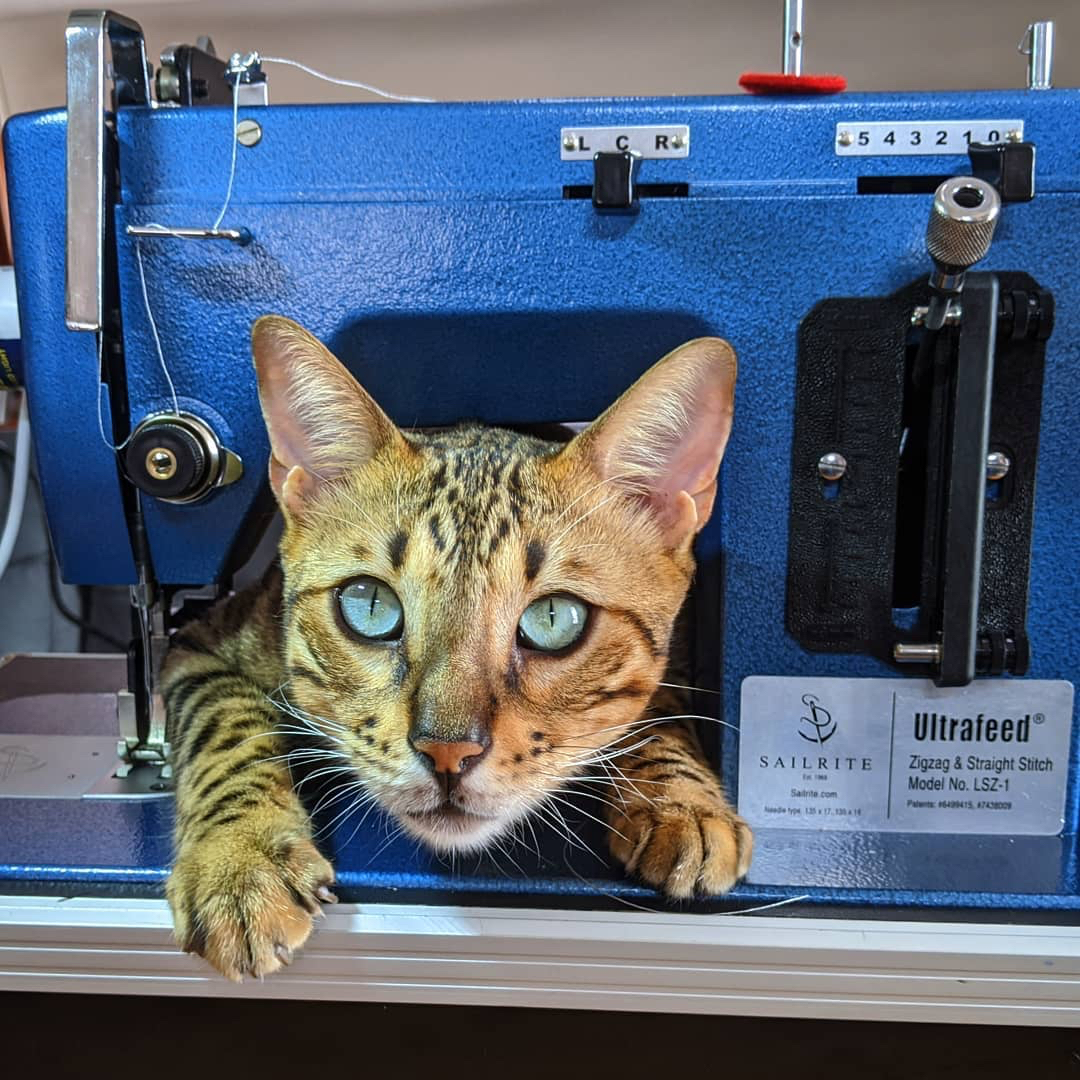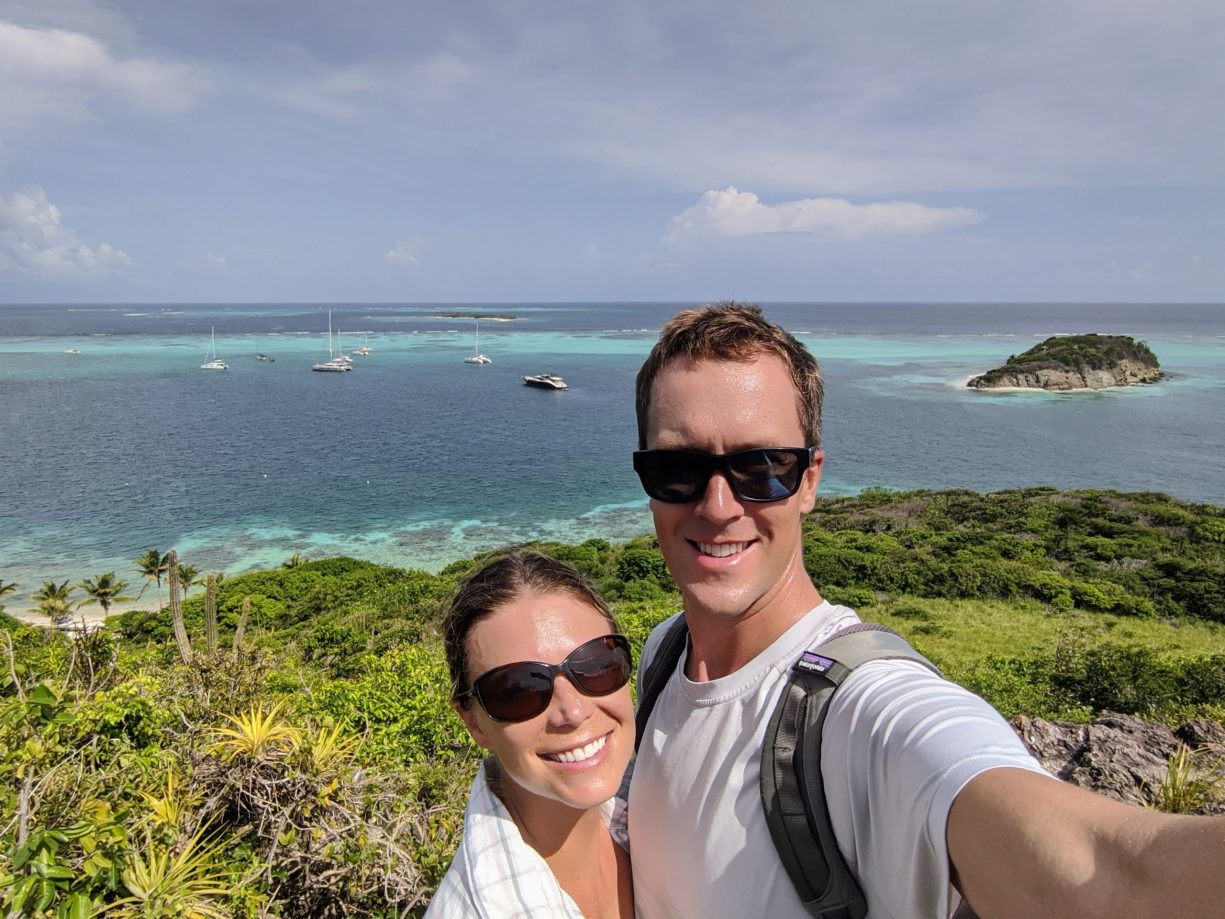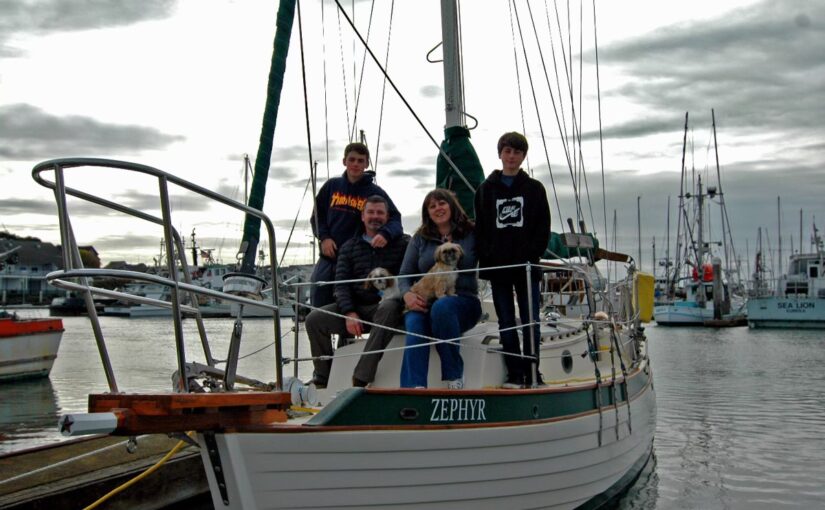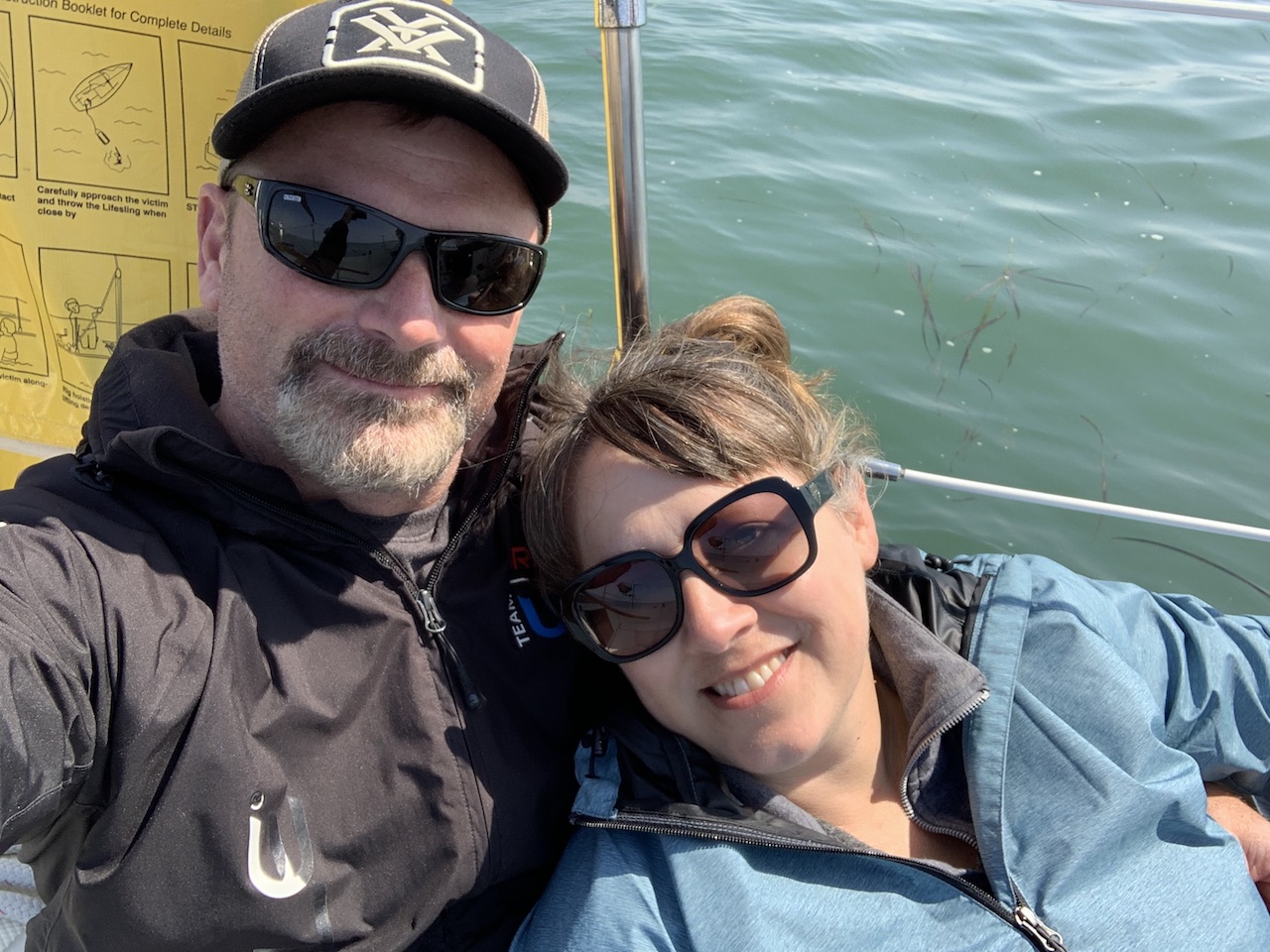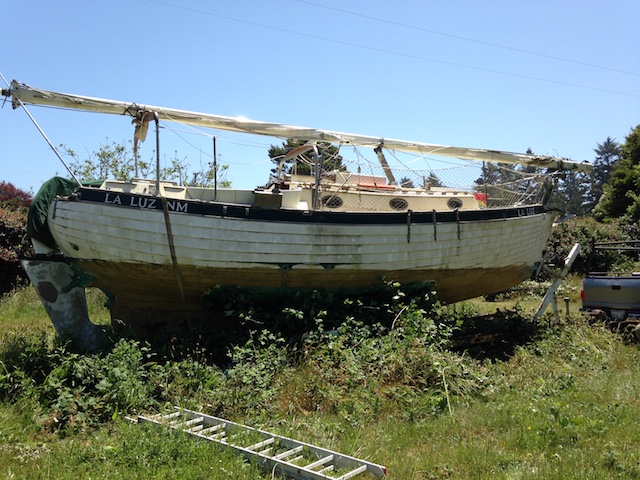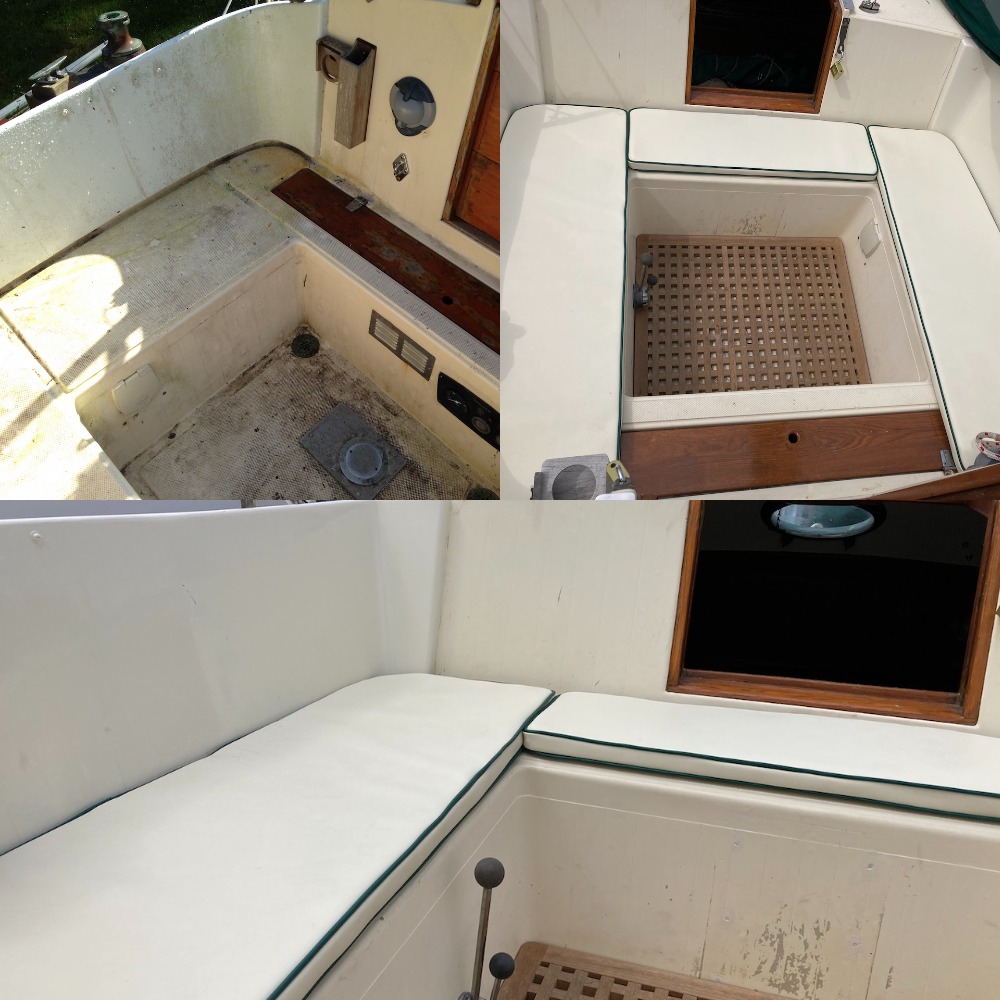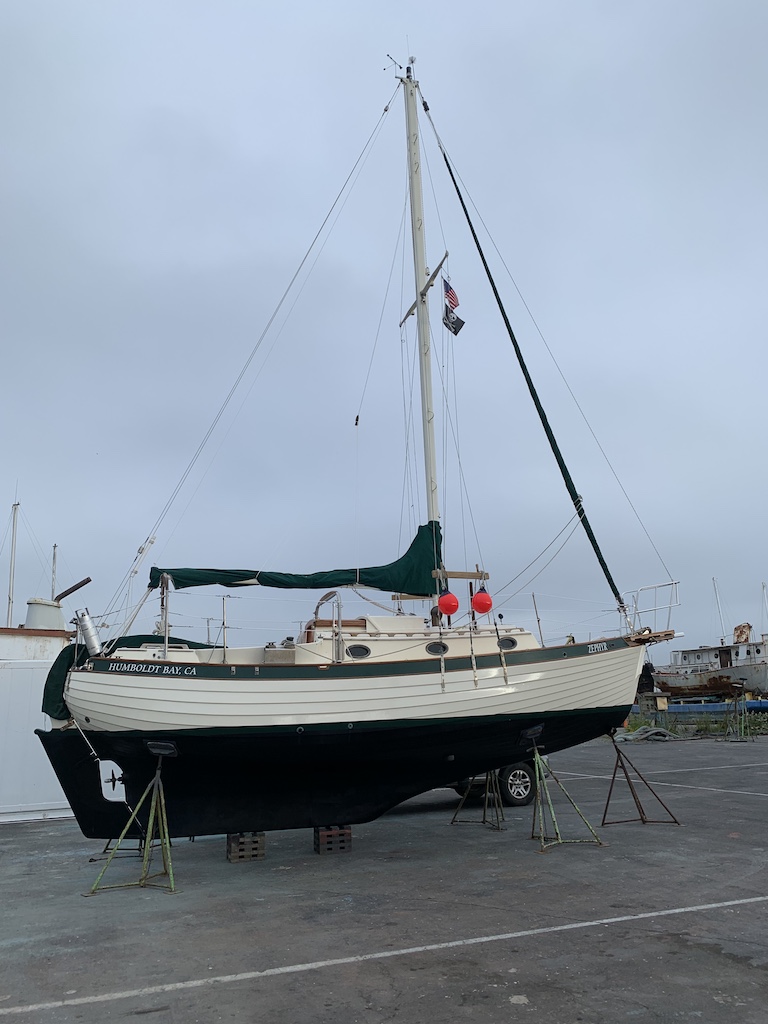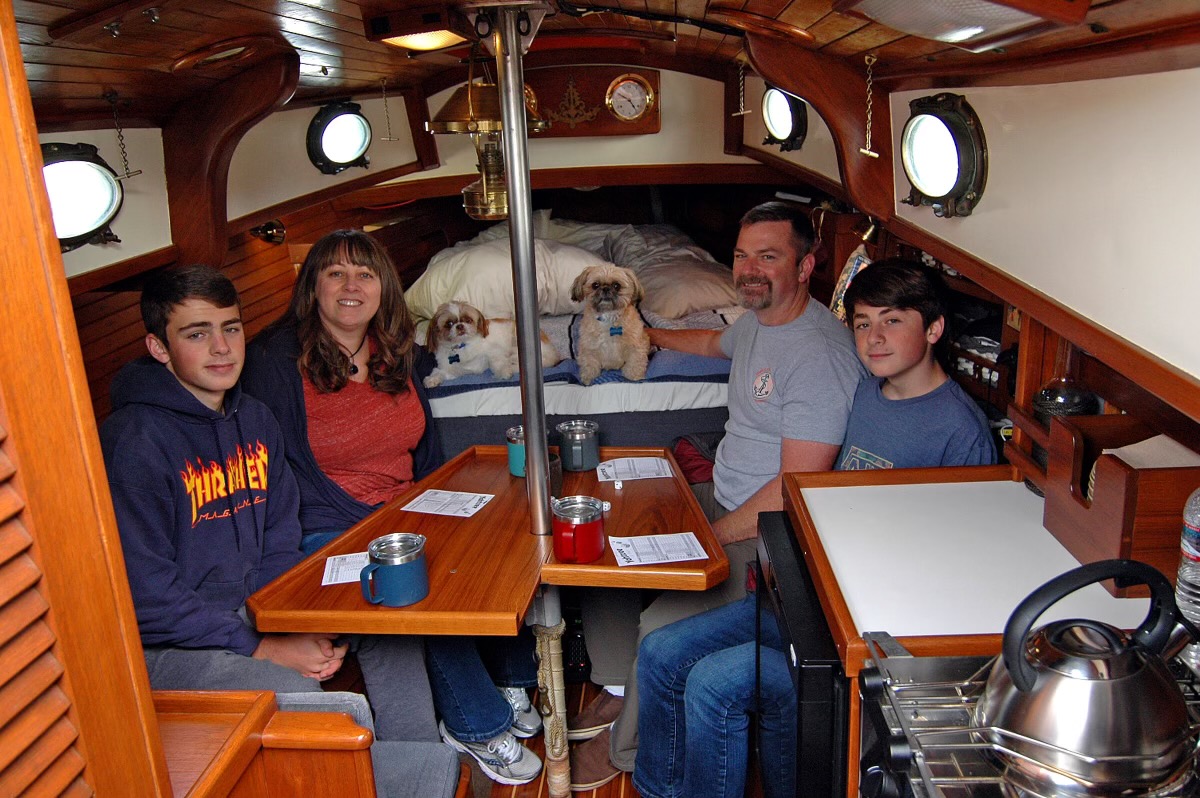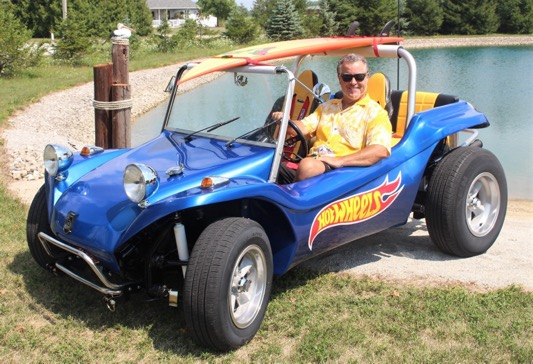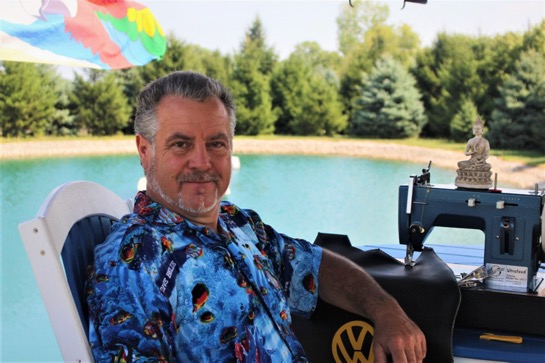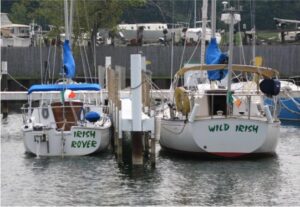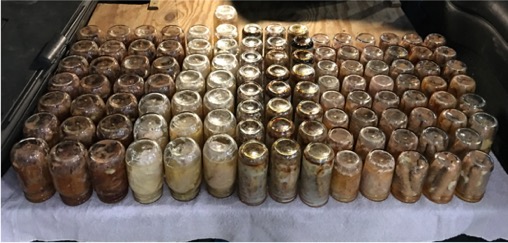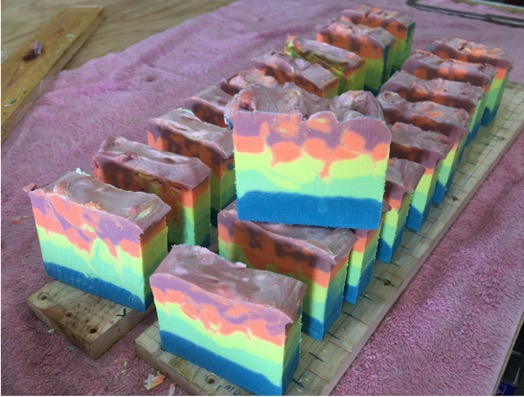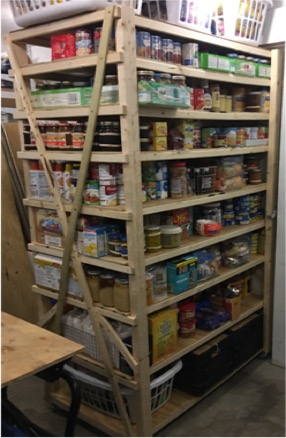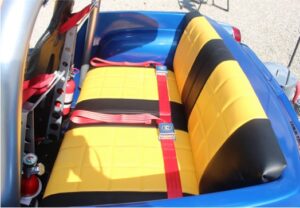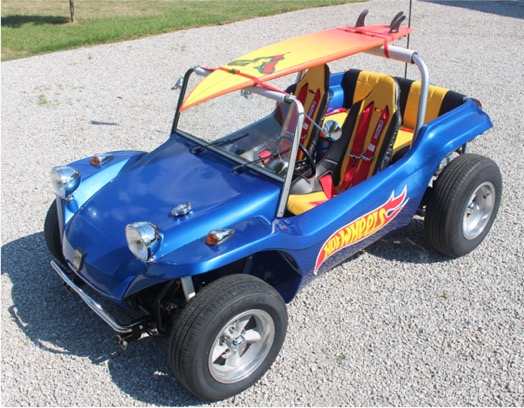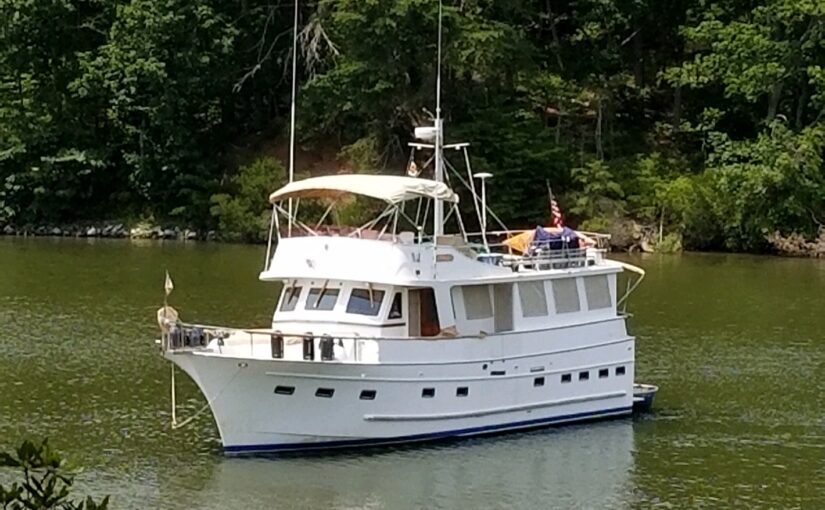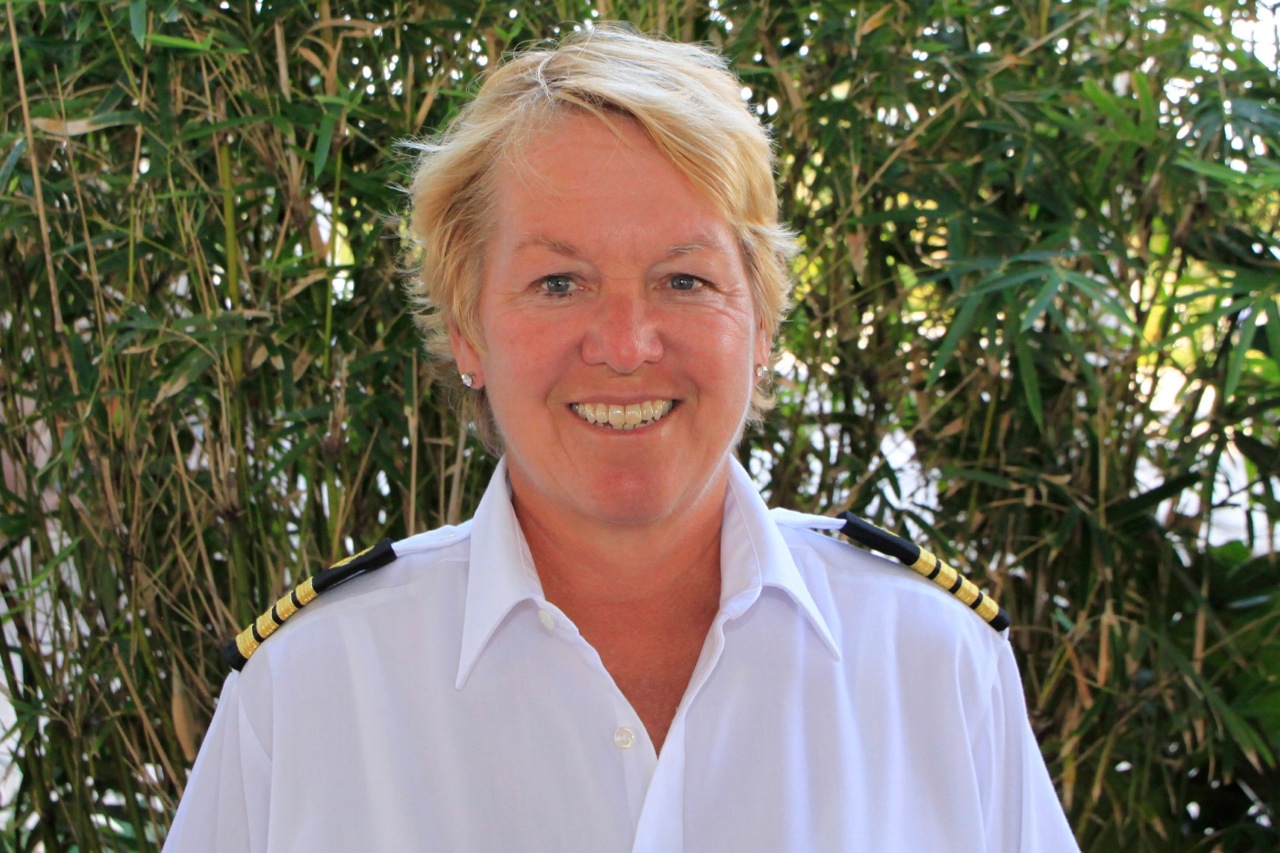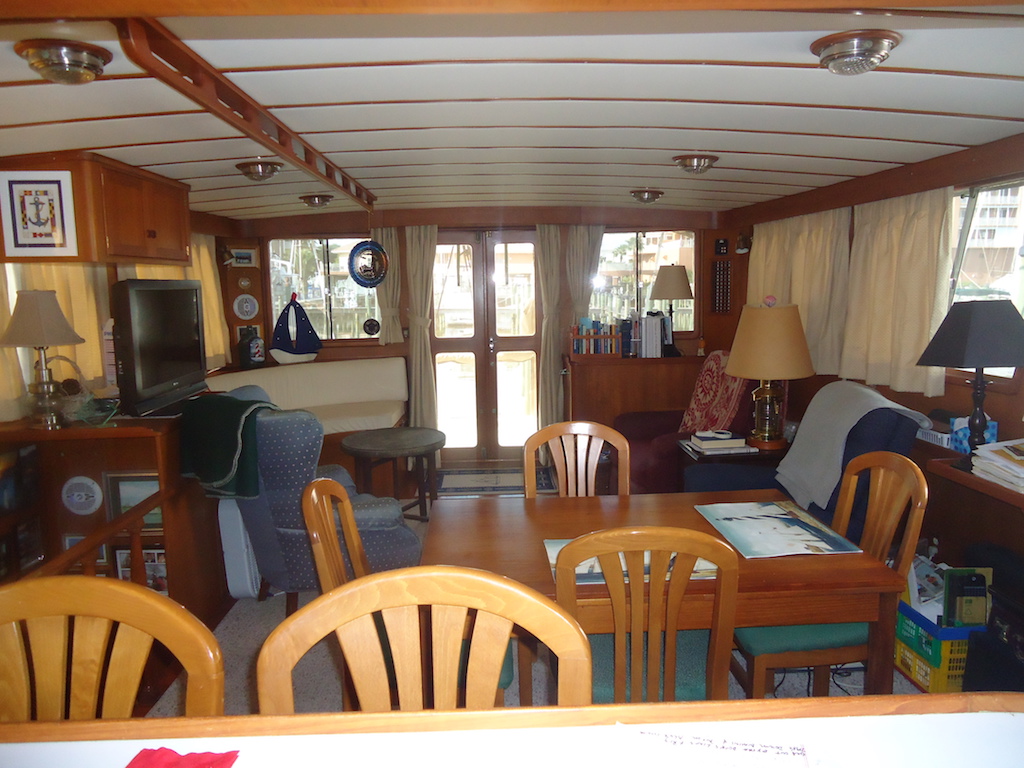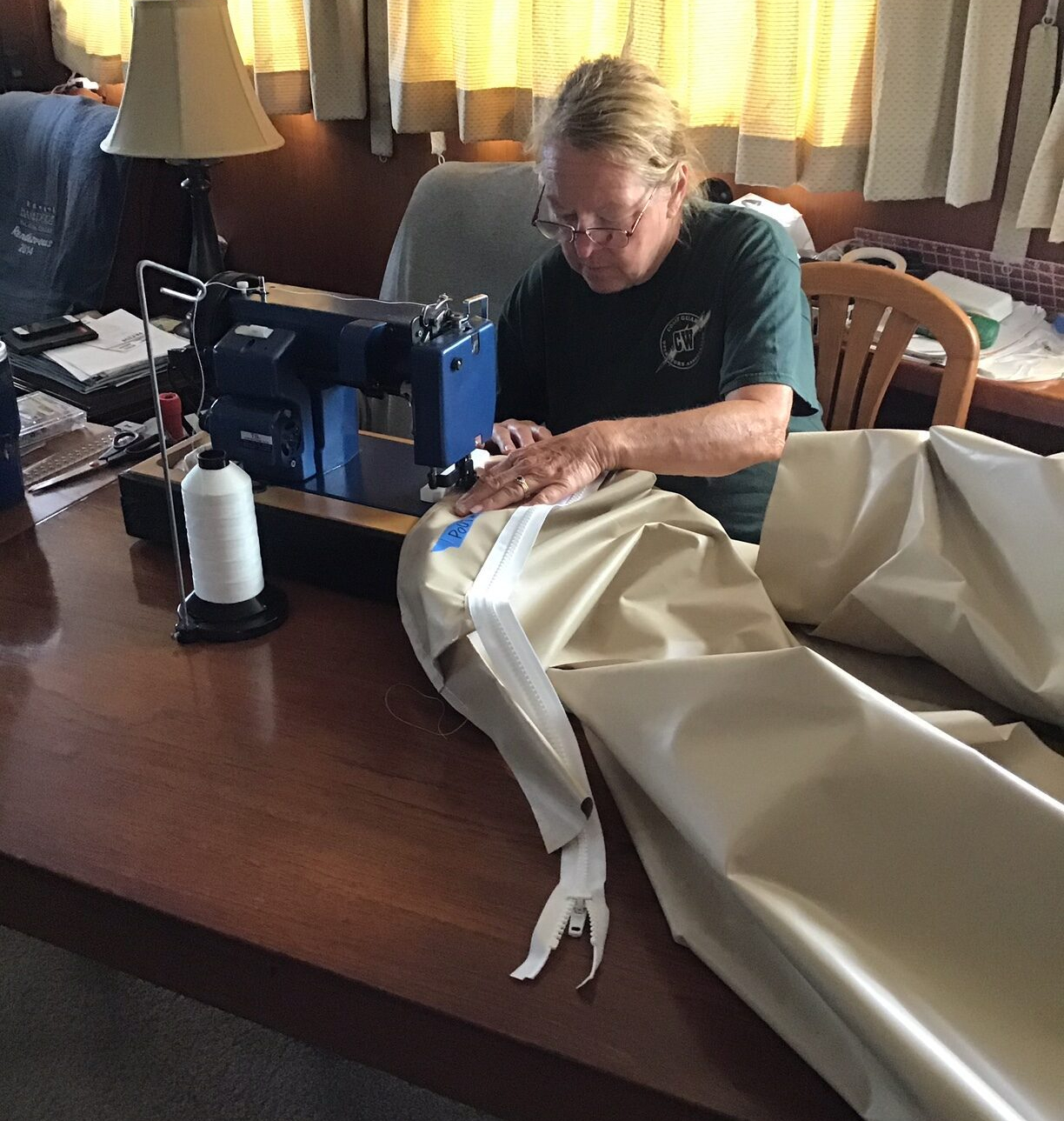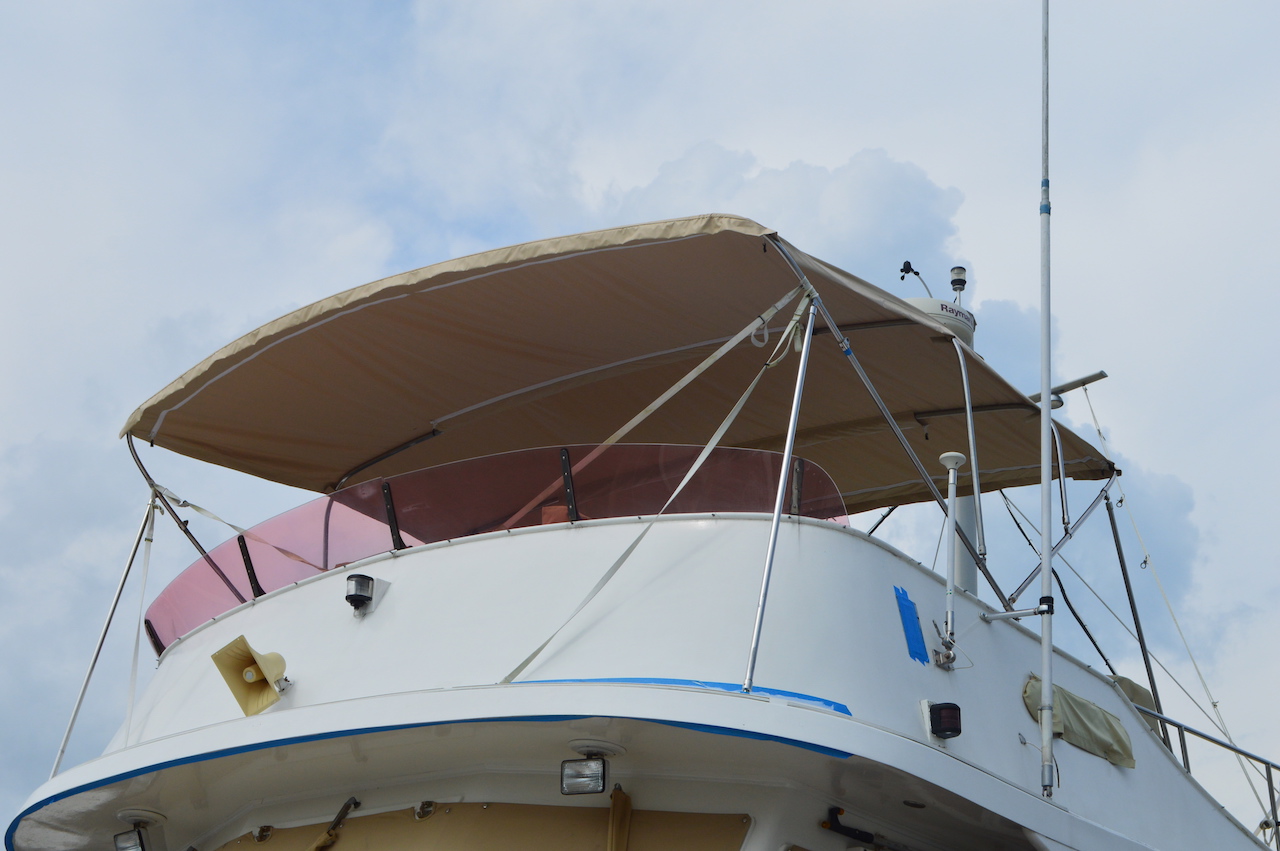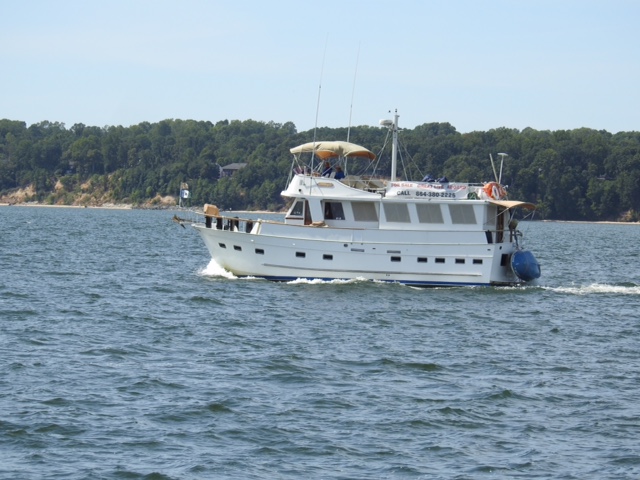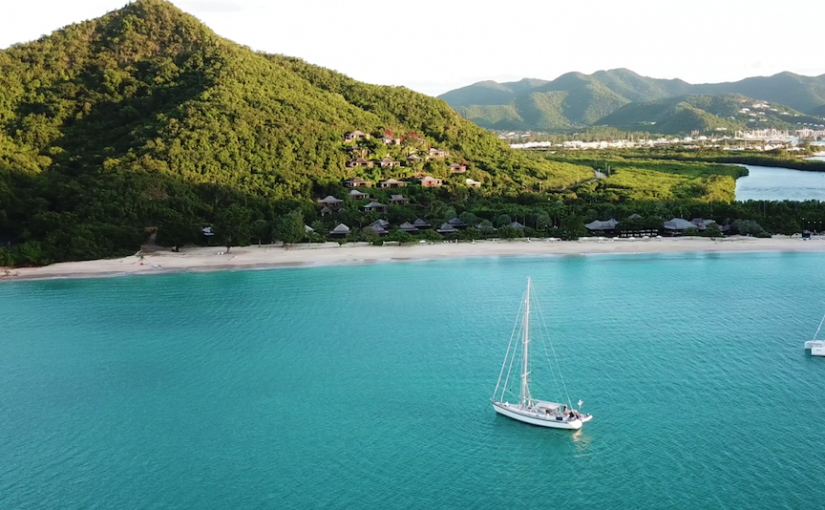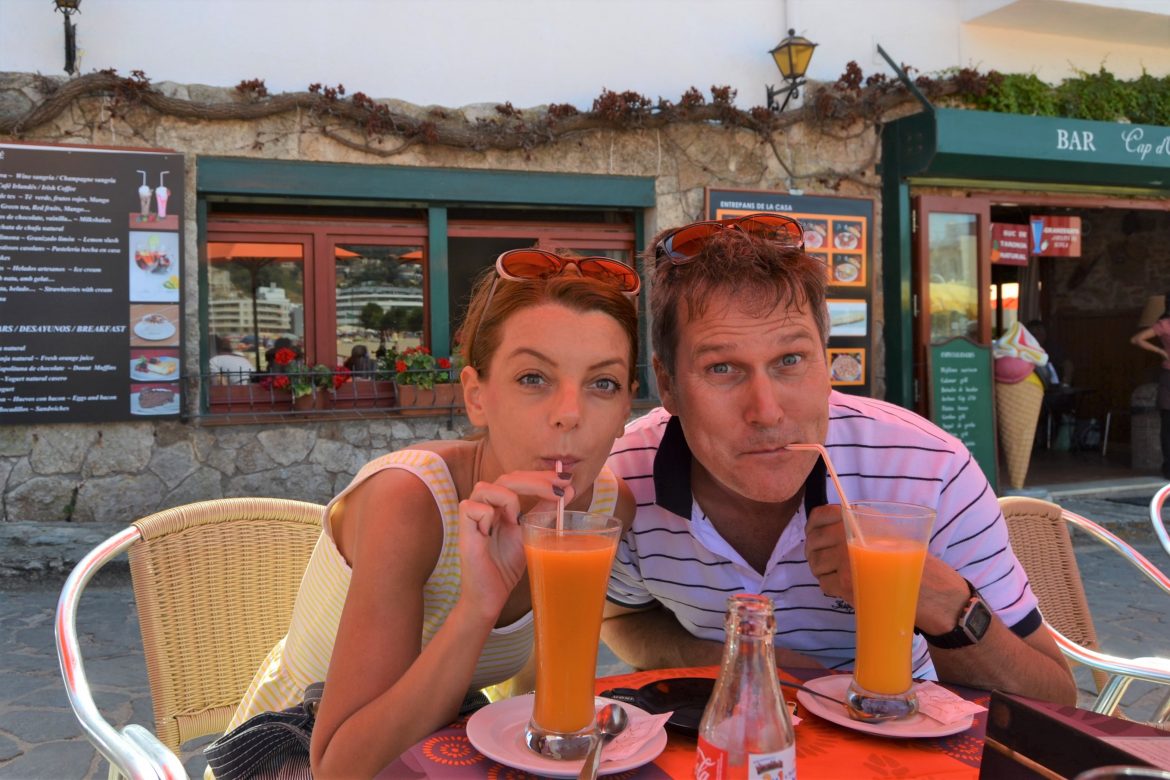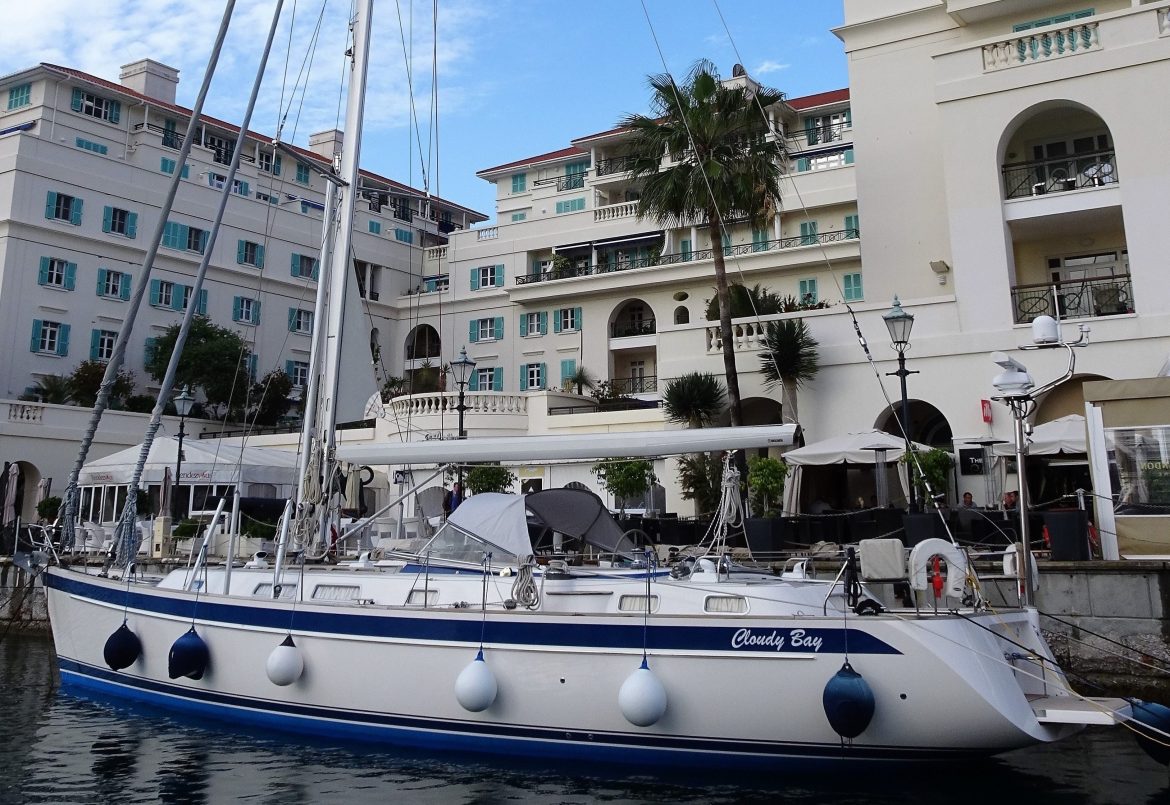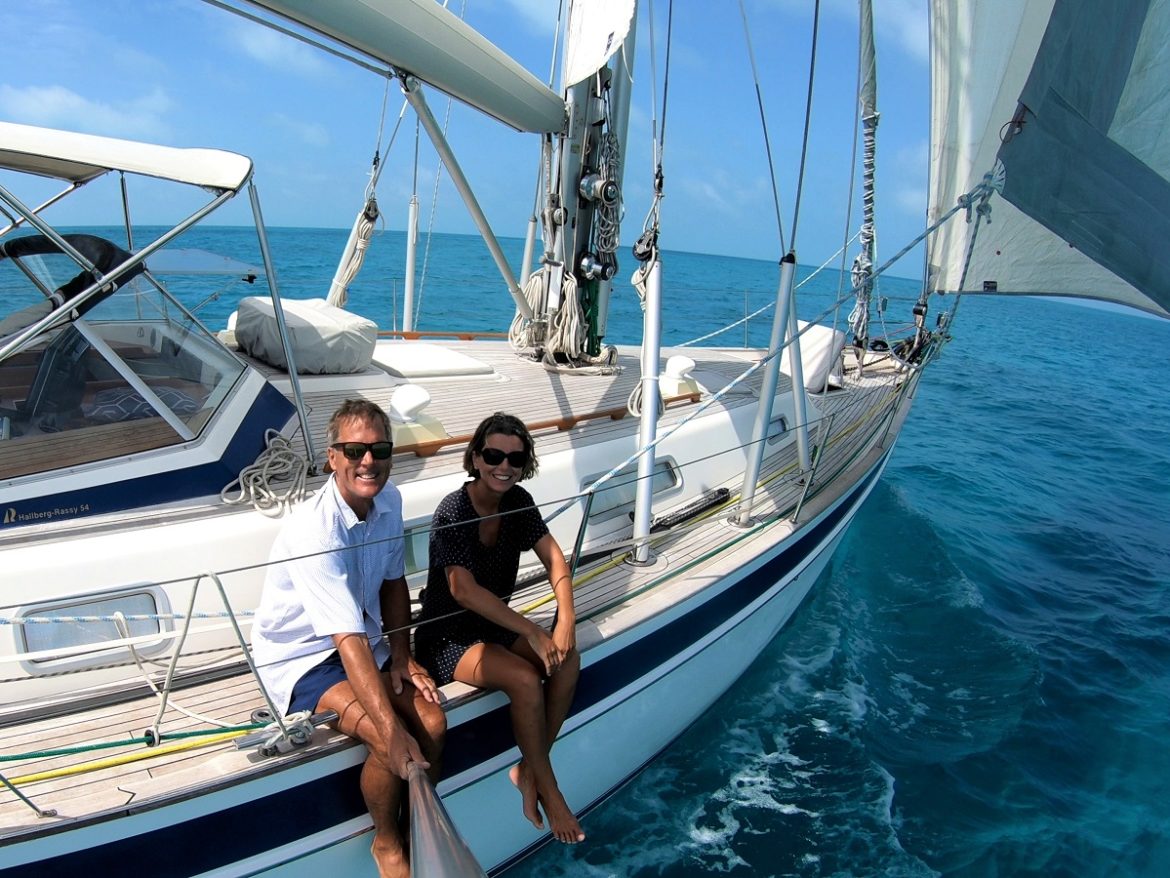Dianne Smock learned to sew at a young age but never considered herself an experienced sewist. That is, until she tackled the project of a lifetime — a winter sailboat cover for her Bayfield 32, named Tilgata. For such a large-scale and heavy-duty project, she needed something tougher than her home sewing machine. There was no question about which machine to choose. Dianne purchased the Sailrite® Ultrafeed® LSZ, and the boat cover was the first project she made with it. In addition to the Ultrafeed, she also utilized Sailrite how-to content and the guidance and advice of our customer support staff to design and craft her massive, three-section winter cover.
The original cover that came with the boat was in rough shape and poorly designed. The massive cover was one piece and weighed about 60 pounds. The cover was assembled on a frame consisting of metal poles that snapped together across the hull. “It took half a day just to assemble the frame. Hauling the cover up and over the frame was a two-person job (or more). The hook-and-loop fasteners had long ago lost their ‘stickiness.’ In addition, it had been modified to fit the boat without the mast; we had to cut it to fit around the mast and then fill the gap with tarps.” Not only was the cover difficult to manage, it did not adequately protect the boat’s interior during harsh winter weather.
Even though Dianne bought the Ultrafeed LSZ specifically for sewing the boat cover, she wasn’t going to let a machine like that go to waste! After she tackled the massive sailboat cover, she stitched up a grill cover, replaced her dodger windows with new Strataglass™ window material, and made slipcovers for her living room chairs.
Keep reading to learn more about Dianne’s story and how she conquered the DIY of a lifetime with her new Ultrafeed, Sailrite how-to videos and help from the Sailrite customer support team.
Q. Can you tell me about the design process of creating your winter sailboat cover?
A. My main objective was to create something that my husband, Randy Anderson, and I could put on and take off by ourselves, so weight was a big deal. I started out with a five-piece design that evolved to the current three pieces, each of which weighs around 10 pounds. I worked it out on paper and sent the design to Sailrite for confirmation that it would work and that I had measured the fabric correctly. We turned our living/dining room into a factory and my husband made a production line to help with the long seams. The pieces zip together; the zippers are hidden under flaps that ensure weatherproof closure. All told there are 41 yards of fabric, eight zippers ranging from 16-96 inches, and the 20+ collars and boots are fastened with hook-and-loop closures. We finished it in October 2020 and Tilgata made it through the harsh northern Michigan winter clean and dry.
Q. Why did you choose the Ultrafeed for your boat cover project?
A. Randy has known about Sailrite for years and subscribed to your catalog many years ago. We even still have a 1992 catalog! He had envisioned making his own sails at one time long ago. He bought what he thought was a “heavy duty” machine (not from Sailrite) but, as often happens, other priorities came about and the machine was stored in our basement unopened for nearly 20 years. When I decided to make a new cover, we got the machine out, and I saw immediately that it was not truly heavy duty, so we decided to do it right this time and get a Sailrite machine. I chose the Ultrafeed LSZ because I knew enough about sewing to know that I would someday need the zigzag feature, and I liked the package of accessories. I like that it can be used for regular sewing jobs as well as big jobs. I don’t think Randy will tackle sailmaking in the future, but he will likely try out the Ultrafeed on some leather projects.
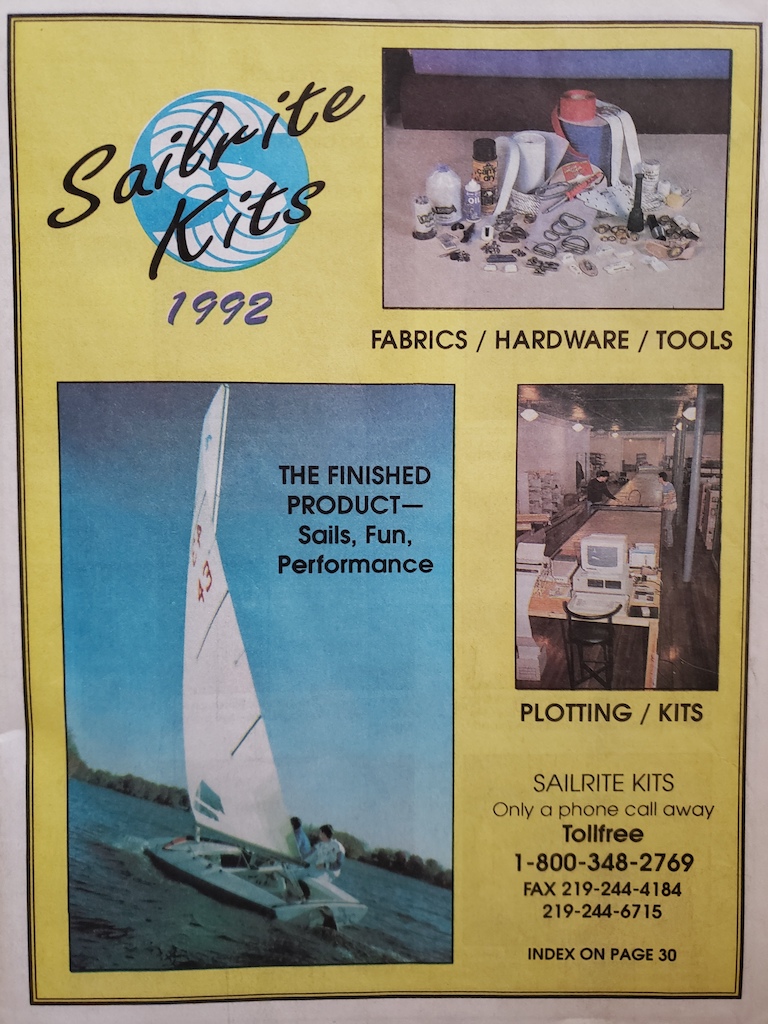
Q. You watched our Winter Sailboat Cover video as well as contacted Sailrite customer service with questions. Can you tell me a bit about what your experience was like working back and forth with our customer service team?
A. I must have watched portions of that video a dozen times! Whenever I got stuck on how to do something, I went back and watched the relevant section until I could replicate it. I developed several versions of the cover design before sending it to your customer service folks for confirmation that the cover would work with the fabric I had selected. I asked dozens of questions and got prompt responses from Bill Becker in Customer Support. Probably the most difficult part of the project for me was figuring out where to cut the slits for the stanchions, stays and shrouds. I was afraid I would ruin the whole thing if I made a mistake. Bill was very reassuring that it didn’t have to be perfect, and he was right — the collar and boot configuration was actually quite forgiving and left some “wiggle room” for an imperfect slit.
Q. How did you feel after you finally completed the cover and you put it on the boat the first time?
A. Relief! It fit! We made a couple of trips last winter to the boat just to make sure everything was intact. When we opened it up this spring, we found a clean and dry deck, which made me very happy. And putting it on this fall was a pleasure — it went on very quickly and easily.
Q. What do you love about being on the water and the sailing lifestyle?
A. First and foremost, we love the majesty of the water and its endless challenges. Nothing beats the moment when the engine is turned off, and the wind fills the sails and propels us — often without care of where we are going — just the enjoyment of the movement. Second, we love the people we have met. Marinas are filled with interesting people and fascinating stories, and we have made friends with wonderful folks from all over.
Q. Where do you launch your boat? Do you do day sails or weekends?
A. Although we live in the Detroit area, we keep our boat in Cheboygan, Michigan, which is 15 miles east of the Straits of Mackinac on Lake Huron. There are many interesting ports and sailing options in the northern Great Lakes. I consider the boat my “up north” cottage; we spend as much time on the boat in the summers as our schedules allow. We do mostly day sails; our trips are usually just two to five days, although we would like to do longer trips … maybe next year.
Q. What do you love or relate to about the DIY lifestyle?
A. I have always been a “doer,” needing to be busy. For many years while I was working and raising kids, I didn’t have much time to devote to projects, although my husband and I have remodeled three houses, doing much of the work ourselves. Since retiring I have looked for new things to do. I have started refinishing old furniture, crocheting, baking and sewing. I’m currently working on restoring a century-old treadle sewing machine that belonged to Randy’s great-grandmother. I like the satisfaction of completing a task — although that feeling doesn’t last long, so I’m off to the next thing!
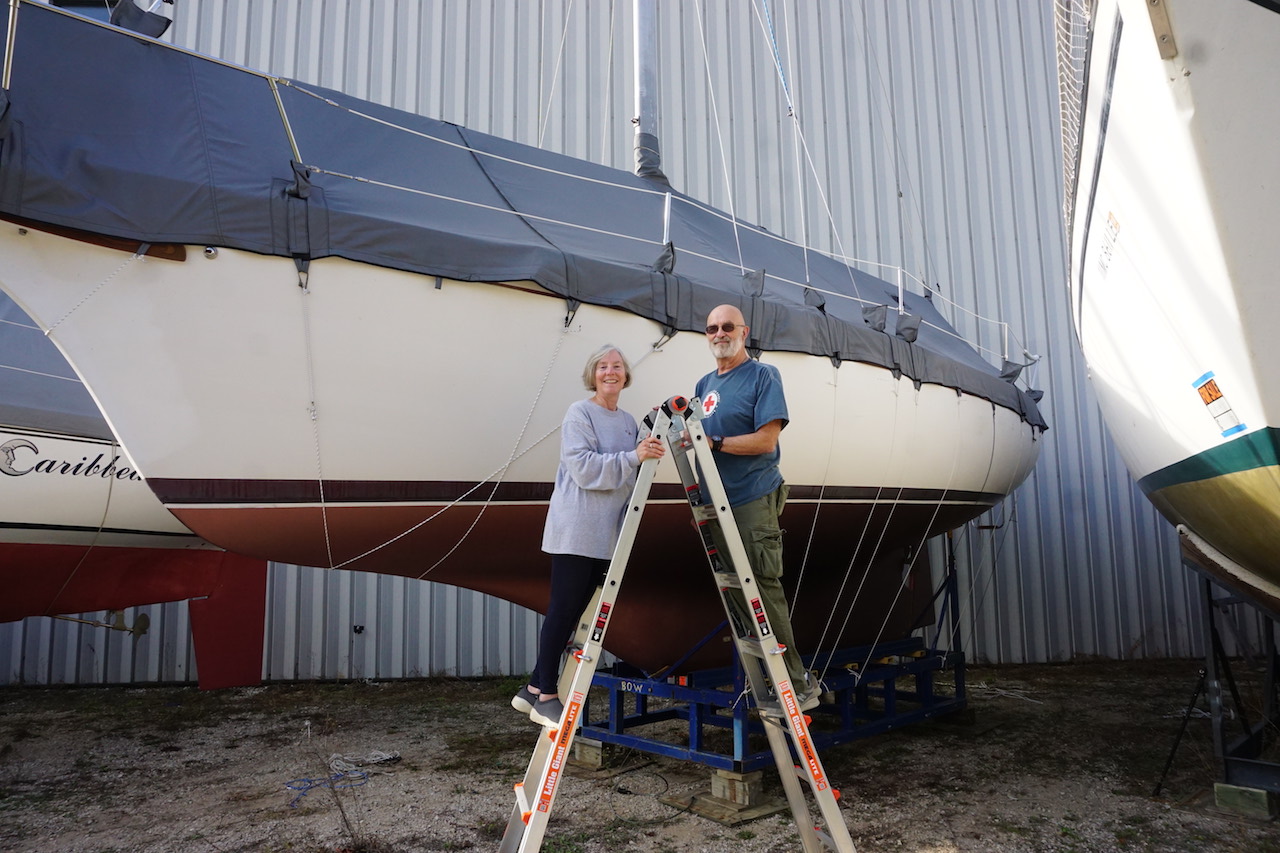
What sewing projects are on the horizon for Dianne? This upcoming winter season she’ll be sewing new cockpit cushions for Tilgata. With the Ultrafeed LSZ by her side and her newfound confidence in her sewing skills, we know she’ll tackle the job like a pro.
Who We Are
Sailrite is your one-stop DIY shop! We are a passionate crew of do-it-yourselfers who strive to equip you with the supplies and how-to knowledge you need to tackle your next project. Do you want to learn upholstery, leatherwork, canvaswork, hobby sewing, bag making or more? We have the fabric, tools, hardware, sewing machines and notions you need to master any DIY. And even if you’ve never sewn before, our tutorials and how-to videos are designed for beginners and experienced crafters alike.
Start your DIY journey today: www.sailrite.com

